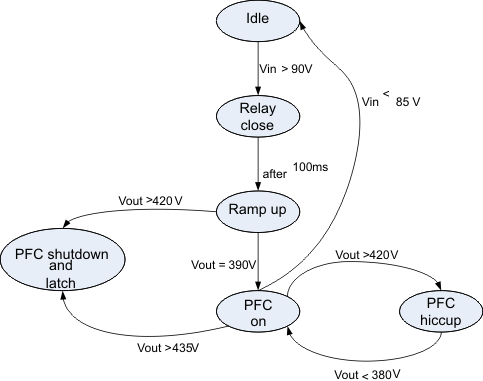SLUU885C March 2012 – June 2024 UCD3138 , UCD3138064 , UCD3138064A , UCD3138128 , UCD3138A , UCD3138A64
- 1
- 2
- Abstract
- 1 Introduction
- 2 Description
- 3 Electrical Performance Specifications
- 4 Schematics
- 5 Test Setup
- 6 List of Test Points
- 7 List of Terminals
- 8 Test Procedure
- 9 Performance Data and Typical Characteristic Curves
- 10EVM Assembly Drawing and PCB Layout
- 11List of Materials
- 12Digital PFC Description
- 13Evaluating the Single-Phase PFC with GUI
- 14Monitoring, Re-configuring and Re-tuning with Designer GUI
- 15Digital PFC Firmware Development
- 16References
- 17Revision History
12.5 State Machine
The PFC hiccups once an over-voltage condition is detected. Only very serious over voltage causes PFC shut down and latch.
Figure 12-13 is the PFC state machine diagram shown below.
 Figure 12-13 PFC State Machine
Figure 12-13 PFC State Machine